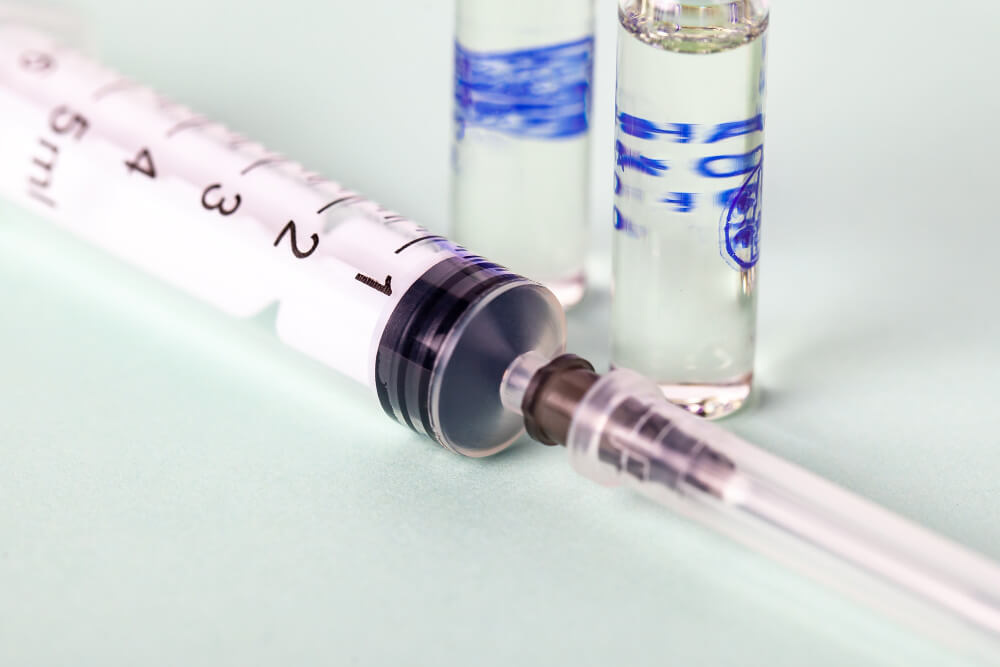The Power of Prevention: How New Training Is Reshaping Healthcare
For generations, our relationship with medicine has been largely reactive. We feel a symptom, we visit a doctor, and we receive a treatment. This model has saved countless lives and remains a pillar of health. Yet, a quiet but powerful revolution is underway, one that seeks to get ahead of illness and cultivate a state of enduring wellness rather than simply fighting off disease as it appears.
This paradigm shift is rooted in preventative care, a proactive approach focused on identifying risks, promoting healthy behaviors, and intervening long before symptoms manifest. It’s about building a resilient foundation of health that lasts a lifetime. To make this vision a reality, a new generation of healthcare professionals requires specialized education, and the demand for comprehensive preventative care training has never been higher.
This advanced training equips clinicians with the tools to look beyond the immediate complaint and see the whole person. It integrates cutting-edge diagnostics with foundational principles of nutrition, exercise, and mental wellbeing. It is the blueprint for a future where the primary goal of medicine is not just to extend lifespan, but to enrich healthspan, the years we live in vibrant, active health.

Why is traditional healthcare changing?
The healthcare landscape as we know it is facing immense pressure. The reactive model, while effective for acute injuries and infections, struggles to manage the rising tide of chronic conditions like heart disease, diabetes, and autoimmune disorders. These illnesses often develop over decades, fueled by lifestyle and environmental factors that a prescription pad alone cannot fix.
This has led to soaring healthcare costs and a system focused on managing disease rather than creating health. Patients and practitioners alike are feeling the strain, recognizing the limitations of a system that often waits for a crisis to act. There is a growing collective desire for a more empowering and sustainable approach to personal health.
People no longer want to simply avoid being sick; they want to feel their best, maintain their cognitive and physical function as they age, and live with vitality. This cultural shift is a major driver behind the move toward prevention. It’s a demand for a healthcare partnership that optimizes wellness, not just one that patches up problems.

What does preventative care actually involve?
Preventative care is a multifaceted discipline that goes far beyond the annual physical. It is a personalized and data-driven strategy to optimize your unique biology. It involves a deep dive into your genetics, lifestyle, and environment to build a customized roadmap for lifelong health.
This approach uses sophisticated tools to get a clear picture of what’s happening inside your body right now and what might happen in the future. It’s about connecting the dots between how you live and how you feel, empowering you with the knowledge to make impactful changes. It moves medicine from a one-size-fits-all model to one that is precisely tailored to you.

How does lifestyle medicine fit in?
Lifestyle medicine is a cornerstone of modern preventative care. It uses evidence-based therapeutic approaches, such as a whole-food, plant-predominant eating pattern, regular physical activity, restorative sleep, and stress management, to treat, reverse, and prevent chronic disease. It is the practice of turning daily habits into powerful medical interventions.
Instead of being an afterthought, lifestyle is treated as a primary factor in health outcomes. A practitioner trained in this field can guide a patient on how to use food to reduce inflammation, exercise to improve metabolic health, or mindfulness to lower cortisol levels. These are not just helpful suggestions; they are clinical strategies with profound biological effects.
For professionals seeking to master this discipline, structured education is key. A comprehensive lifestyle medicine board certification course provides the in-depth knowledge required to confidently integrate these protocols into clinical practice and guide patients toward sustainable change.

What is the role of advanced diagnostics?
Preventative care thrives on data. While a standard blood test can tell you if you are within a ‘normal’ range, advanced diagnostics aim for ‘optimal’. This means using more sensitive and comprehensive tests to detect subtle imbalances and risks long before they become clinically apparent diseases.
These can include extensive biomarker panels that look at inflammation, metabolic health, and nutrient levels with incredible detail. Genomic testing can reveal genetic predispositions, allowing for highly targeted preventative strategies. Wearable technology provides real-time data on sleep quality, heart rate variability, and activity levels, offering continuous insight into your body’s performance.
This wealth of information allows a clinician to move beyond guesswork. It helps them create a truly personalized plan that addresses your specific needs, whether that means recommending a particular supplement, a specific type of exercise, or a change in diet to support your unique genetic makeup.

How are medical professionals learning these new skills?
The principles of preventative and longevity medicine are not always a central focus of traditional medical education, which has historically prioritized pathology and treatment. To become experts in this emerging field, dedicated professionals must seek out specialized postgraduate training that builds upon their foundational medical knowledge.
This advanced education is crucial for understanding the complex interplay between genetics, lifestyle, and environment. It involves learning how to interpret advanced diagnostic tests, design personalized nutrition and fitness plans, and guide patients through meaningful behavioral changes. It’s a skillset that combines the roles of medical detective, health coach, and scientific advisor.
Formal programs are designed to provide this expertise. A detailed curriculum for a preventative medicine fellowship often includes deep dives into clinical nutrition, exercise physiology, genomics, and the science of aging. This rigorous training ensures that practitioners are equipped with the latest evidence-based protocols to deliver the highest standard of care.
The entire medical field is slowly acknowledging this necessary evolution. Experts increasingly agree that the future of medicine from treatment to prevention is not just a possibility but an inevitability. This shift requires a new way of thinking and a new approach to clinical practice, built on the foundation of proactive, personalized health optimization.

What is regenerative medicine and how does it connect to prevention?
Regenerative medicine represents one of the most exciting frontiers in the quest for extended healthspan. While often associated with treating injuries or diseases, its principles are deeply connected to prevention. At its core, this field aims to harness and amplify the body’s innate ability to repair, replace, and rejuvenate itself.
Instead of just managing decline, regenerative medicine seeks to restore youthful function to cells and tissues. This proactive approach can potentially address the cellular damage that accumulates with age, which is the root cause of many chronic conditions. By repairing this damage before it leads to systemic problems, it acts as the ultimate form of preventative care.
To understand its scope, it helps to learn what regenerative medicine is from trusted health sources. It is a broad field that encompasses various cutting-edge therapies designed to restore the structure and function of damaged tissues and organs. This is a far cry from simply masking symptoms with medication.
Pioneering institutions are leading the charge in this transformative area of science. For example, the Wake Forest Institute for Regenerative Medicine is at the forefront of developing new therapies that could one day make age-related degeneration a treatable, and perhaps preventable, condition. Their work is a testament to the incredible potential of this field.

What are some examples of regenerative therapies?
The field of regenerative medicine is diverse and rapidly evolving. It includes a range of therapies that work in different ways but share the common goal of stimulating the body’s own healing mechanisms. These approaches are moving from the laboratory to the clinic, offering new hope for a variety of conditions.
While some of these therapies are still in development, they provide a glimpse into a future where we can actively repair the human body. The focus is on fixing the underlying problem at a cellular or molecular level, leading to more durable and meaningful health improvements.

What is cell therapy?
Cell therapy involves introducing new, healthy cells into the body to replace diseased or damaged ones. The most well-known example is stem cell therapy. Stem cells are unique because they are undifferentiated, meaning they have the potential to develop into many different types of cells, such as muscle, cartilage, or nerve cells.
In a preventative context, cell therapies could one day be used to rejuvenate aging tissues, such as strengthening a heart muscle before it fails or repairing joint cartilage before it wears away completely. The goal is to replenish the body’s own pool of repair cells, which naturally declines with age, thereby maintaining tissue integrity and function for longer.

How does gene therapy work?
Gene therapy is a revolutionary technique that aims to treat or prevent disease by correcting the underlying genetic problem. Think of your DNA as the body’s instruction manual. Sometimes, there are ‘typos’ or mutations in these instructions that can lead to disease. Gene therapy attempts to fix these typos.
This can be done by replacing a mutated gene with a healthy copy, inactivating a gene that is causing problems, or introducing a new gene to help the body fight a disease. From a preventative standpoint, its potential is immense. For individuals with a known genetic risk for a condition like hereditary heart disease or certain cancers, gene therapy could one day offer a way to correct that risk before the disease ever has a chance to develop.

What about tissue engineering?
Tissue engineering is a branch of regenerative medicine that combines cells, engineering, and materials to improve or replace biological tissues. This field is perhaps most famous for its long-term goal of growing entire organs in a lab for transplantation, which would solve the problem of organ shortages and rejection.
On a smaller scale, tissue engineering is already being used to create skin grafts for burn victims or to grow cartilage to repair damaged joints. In the future, this technology could be used preventatively to replace tissues that are showing signs of wear and tear long before they fail, essentially swapping out old parts for new ones to maintain the body’s overall function.

Is regenerative medicine safe and regulated?
With any powerful new medical technology, questions of safety and oversight are paramount. The promise of regenerative medicine is immense, but it is crucial that its development and application are guided by rigorous scientific standards and strict regulatory frameworks. Patients need to be confident that any therapy they receive is both safe and effective.
Fortunately, this is a top priority for government agencies and professional organizations around the world. These bodies work to ensure that new treatments go through extensive testing before they become widely available. They establish the rules that researchers and clinicians must follow to protect patient safety.
The U.S. Food and Drug Administration (FDA) plays a central role in this process. The agency has specific pathways for evaluating and approving new treatments, including a category for regenerative medicine advanced therapy products. This ensures that therapies meet high standards for safety, purity, and potency.
In addition to government oversight, professional societies also help advance the field responsibly. Organizations like the American Society of Gene & Cell Therapy bring together the world’s top scientists and clinicians to share research, establish best practices, and promote ethical conduct. This collaborative effort helps ensure the field moves forward with integrity.

How can you benefit from preventative care today?
The exciting future of regenerative and preventative medicine is already beginning to influence the care you can receive right now. You do not need to wait for lab-grown organs to become a reality to take a more proactive approach to your health. The first step is a change in mindset, from passive patient to active partner in your own wellness journey.
Start by seeking out healthcare practitioners who are trained in preventative, functional, or longevity medicine. These clinicians are skilled at looking for the root causes of health issues and are focused on optimization. They will likely spend more time with you, ask detailed questions about your lifestyle, and utilize advanced diagnostics to build a complete picture of your health.
Be an engaged participant in your health. Ask questions about not just treating your symptoms, but improving your overall resilience. Discuss your health goals, whether they involve running a marathon, maintaining mental sharpness, or simply having more energy to play with your grandchildren. This collaborative approach is the essence of modern preventative care.
Ultimately, this new era of medicine puts you in the driver’s seat. It provides you with the information and guidance to make choices that will have a lasting impact on your healthspan. It is an empowering, personalized, and optimistic vision of healthcare, and it is accessible today.
This shift toward prevention is more than a trend; it is the future of medicine. It’s a move toward a system that champions vitality and resilience, leveraging everything from lifestyle changes to cutting-edge regenerative science. It’s about giving you the tools and knowledge to build a longer, healthier, and more vibrant life.
Frequently Asked Questions

How will understanding ApoB and Lp(a) change my patient management beyond standard cholesterol panels?
Mastering advanced lipid panels fundamentally shifts your focus from cholesterol concentration (LDL-C) to the actual number of atherogenic particles (ApoB), which is a more direct measure of cardiovascular risk. This allows for more accurate risk stratification, especially in patients with discordant risk markers like normal LDL-C but high ApoB, a common finding in metabolic syndrome. You can then set more precise therapeutic targets and better assess the efficacy of interventions.
Furthermore, identifying a patient’s Lp(a) level reveals a significant, genetically determined risk factor for cardiovascular disease that standard panels completely miss. Knowing this value allows you to be far more proactive in management, as high Lp(a) warrants more aggressive lifestyle and pharmacological strategies, even in individuals with otherwise normal lipids. This training empowers you to move beyond reactive care and implement truly preventative cardiovascular medicine.

I’m a dietitian or health coach, not a cardiologist.
Is this advanced lipid training still relevant for my practice? Absolutely, this training is highly relevant and can significantly elevate your practice. It enables you to understand the sophisticated lab work your clients may have, allowing you to provide more targeted and impactful dietary and lifestyle recommendations. By grasping the nuances of ApoB and Lp(a), you can explain the physiological "why" behind your guidance with greater authority, which enhances client trust and adherence.
This knowledge also facilitates more effective collaboration with your client’s primary care providers and specialists. You will be equipped to ask more insightful questions and contribute meaningfully to discussions about their overall cardiovascular risk management plan. This positions you as a more knowledgeable and integral part of the patient’s healthcare team, moving your practice beyond generic wellness advice.

After completing this training, what are the biggest challenges in implementing advanced lipid testing in a clinical setting?
One of the most common challenges is navigating insurance reimbursement and patient cost, as advanced lipid tests are not yet universally covered. The training prepares you to advocate for your patients by providing the clinical justification needed for letters of medical necessity. Another practical hurdle can be a lack of familiarity with these markers among other healthcare professionals, requiring you to educate both patients and colleagues on their importance.
A second significant challenge is integrating the results into the full clinical picture rather than viewing them in isolation. A high Lp(a) or ApoB value must be considered alongside a patient’s complete health history, lifestyle factors, and other comorbidities to develop a personalized and appropriate action plan. The goal is to use this data for nuanced decision-making, avoiding the pitfall of over-treating a number instead of treating the whole patient.
Discover the most comprehensive functional medicine training, longevity training, and biohacking certification programs designed specifically for healthcare professionals, medics, and clinic owners who want to master regenerative medicine protocols and anti-aging therapies.







